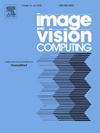DiffusionLoc: A diffusion model-based framework for crowd localization
IF 4.2
3区 计算机科学
Q2 COMPUTER SCIENCE, ARTIFICIAL INTELLIGENCE
引用次数: 0
Abstract
The accurate location of individuals in dense crowds remains a challenging problem and is of significant importance for crowd analysis. Traditional methods, such as box-based and map-based approaches, often fail to achieve ideal accuracy in high-density scenarios. Point-based localization methods have recently shown promising results but generally rely on heuristic priors to address localization tasks. This reliance on priors can lead to unstable performance across diverse scenarios, especially in crowds with significant density variations, where the methods struggle to generalize effectively. In this work, we introduce a framework called DiffusionLoc built upon the diffusion models, which directly generates target points from random noise, simplifying the pipeline of point-based methods. Moreover, we design a feature interpolation method, called Differential Attention-based Implicit Feature Interpolation (DF-IFI), which effectively mitigates the instability of noisy points while extracting their features. Extensive experiments show that DiffusionLoc demonstrates superior competitive performance, and adapts flexibly to different scenarios by dynamically modifying the number of noisy points and iteration steps.
DiffusionLoc:一个基于扩散模型的人群定位框架
在密集人群中个体的准确定位是一个具有挑战性的问题,对人群分析具有重要意义。传统的方法,如基于盒体和基于地图的方法,在高密度场景下往往无法达到理想的精度。基于点的定位方法最近显示出有希望的结果,但通常依赖于启发式先验来解决定位任务。这种对先验的依赖可能导致在不同场景下的性能不稳定,特别是在具有显著密度变化的人群中,方法难以有效地泛化。在这项工作中,我们引入了一个名为DiffusionLoc的框架,该框架基于扩散模型,直接从随机噪声中生成目标点,简化了基于点的方法的流水线。此外,我们设计了一种基于差分注意的隐式特征插值方法(DF-IFI),该方法在提取噪声点特征时有效地降低了噪声点的不稳定性。大量的实验表明,DiffusionLoc具有优越的竞争性能,并通过动态修改噪声点的数量和迭代步长,灵活地适应不同的场景。
本文章由计算机程序翻译,如有差异,请以英文原文为准。
求助全文
约1分钟内获得全文
求助全文
来源期刊

Image and Vision Computing
工程技术-工程:电子与电气
CiteScore
8.50
自引率
8.50%
发文量
143
审稿时长
7.8 months
期刊介绍:
Image and Vision Computing has as a primary aim the provision of an effective medium of interchange for the results of high quality theoretical and applied research fundamental to all aspects of image interpretation and computer vision. The journal publishes work that proposes new image interpretation and computer vision methodology or addresses the application of such methods to real world scenes. It seeks to strengthen a deeper understanding in the discipline by encouraging the quantitative comparison and performance evaluation of the proposed methodology. The coverage includes: image interpretation, scene modelling, object recognition and tracking, shape analysis, monitoring and surveillance, active vision and robotic systems, SLAM, biologically-inspired computer vision, motion analysis, stereo vision, document image understanding, character and handwritten text recognition, face and gesture recognition, biometrics, vision-based human-computer interaction, human activity and behavior understanding, data fusion from multiple sensor inputs, image databases.
 求助内容:
求助内容: 应助结果提醒方式:
应助结果提醒方式:


